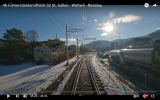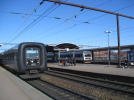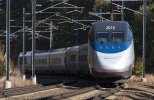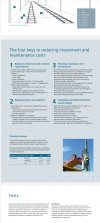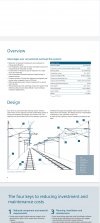Thanks for that info. The proposition of getting better stiffness with the stagger from unidirectional tension on curves is particularly interesting, especially as the moments at the points of registration are in both X and Y planes. In the pictured offset catenary examples, that energy is dissipated in the whole conductor/dropper/catenary structure which with a much higher mass, I assume, would have a lower resonance (f0) and higher Q, making multi-pantograph operation even more problematic. The use of compound catenary just compounds* the mass and adds to the woes of the OLE.
Was the higher mass issue
part of the move away from compound catenary in the UK? I assume that the other shortcoming was the uncompensated fixed tension used with it.
* apologies for the pun

